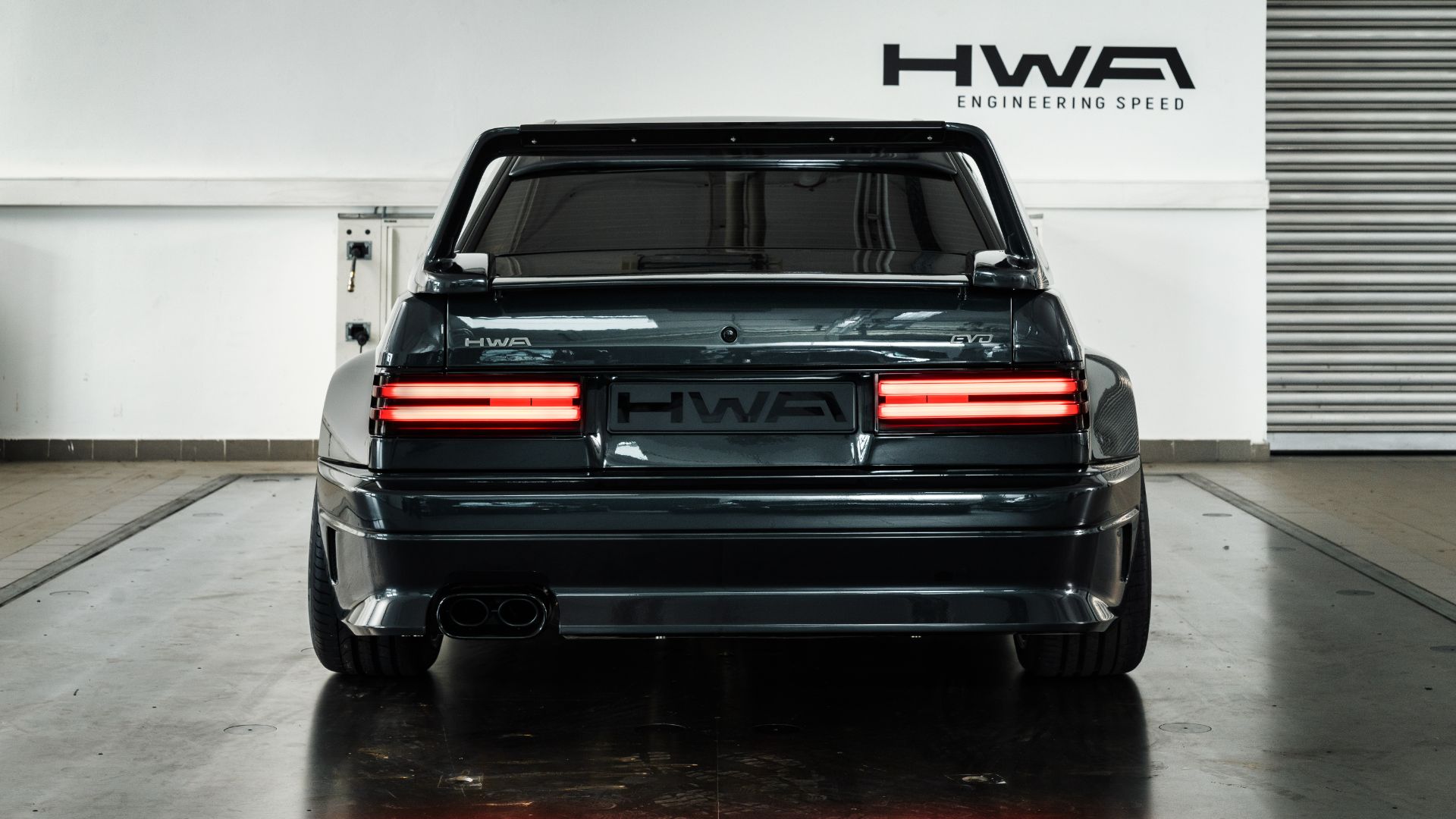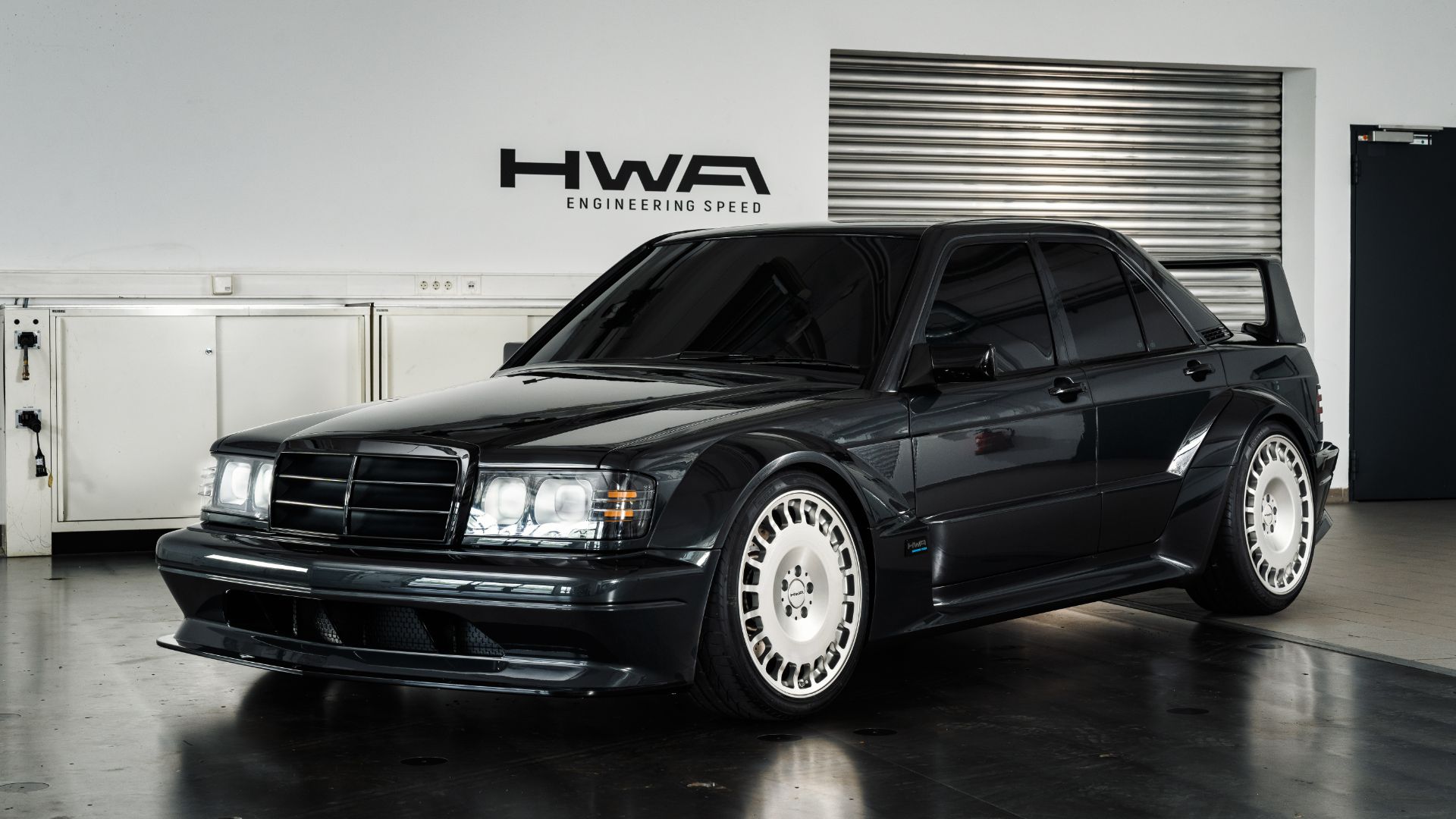The reborn 190E super sedan takes Singer into its sights

The Mercedes-Benz 190E 2.5-16 Evo II was launched in 1990 and was a classic homologation model. The racing version competed in the German Touring Car Championship (DTM) with the E30 BMW M3 and the Audi V8, ultimately winning the title in 1992. And the road-going Evo II remains one of the wildest cars to ever bear the star.
Now the Evo II is back, “further developed” by HWA into a “road-legal, race-track-ready super sports car” with a carbon fiber body, DTM-derived suspension and twice the power of the Stuttgart original.
But don’t use the word with an “R”… “This is not a restomod, it’s a completely new car,” says chief engineer Gordian von Schöning. We traveled to HWA’s headquarters in Affalterbach, southern Germany – also home to Mercedes-AMG – to get a detailed preview.
Born in Affalterbach

The proximity of HWA to AMG is no coincidence. Company founder Hans Werner Aufrecht (note the initials) was also the “A” in AMG and founded the now legendary tuning company in 1967. When DaimlerChrysler took over AMG in 1998, Aufrecht – literally across the street on Benzstrasse – started afresh with HWA.
Even in its 26th year of existence, HWA’s focus has always been on motorsport. The company has won eleven DTM championships with Mercedes-Benz and supplies engines and electric drive trains for Formula 3 and Formula E. The company also hand-builds around 120 AMG GT-based racing cars every year, including the Track Series, GT4 and GT3.
Joint projects with AMG on the road side included the extreme CLK-GTR “street version”, the CLK DTM and the SL 65 Black Series. HWA also built the Apollo IE hypercar and recently started building the De Tomaso P72. However, until now the company has never launched a car under its own name.
Building “emotional engines”

Before we get to know the new Evo in person, CEO Martin Marx – who began his career as a racing engineer with Bernd Schneider – shows us around the car. The reception is enhanced by an Aston Martin Vantage DTM built by HWA, which competed for one season in 2019, as well as a huge trophy collection. It quickly becomes clear that there are motorsport trophies everywhereIn the offices on the upper floor they even serve as doorstops.
We start in the engine workshop, where Marx shows me the 850 hp, 9,000 rpm V12 that HWA developed for the Pagani Huayra R. “Horacio Pagani told us he wanted an emotional engine and we delivered,” he says with a smile.
On the way to the design studio, we see how classic Mercedes-Benz paint colors like Silver Thistle and Sunset Orange are remixed and improved for the Evo. Then it’s off to the test bench rooms, where road and racing components are put through their paces. “Our dynamometer for transient powertrains is the only one in Germany,” explains Marx. “It can simulate demanding laps on any race track in the world: acceleration, braking and cornering forces – even driving over curbs.”
Our tour ends at the production facility, where race-ready versions of the AMG GT are built from body shells. From early 2025, the Evo will also be assembled here – at a rate of one car per week. Max says 71 of the planned 100 cars have already been allocated.
The development of Evo

At a price of €714,000 (around £730,000), that’s a significant sales success. However, Gordian von Schöning says that “the engineering is on a completely different level to any competitor, even a certain company from California.” That’s Singer Vehicle Design, in case you haven’t read between the lines…
In fact, the center section of the steel chassis is the only major part carried over from the donor Mercedes-Benz 190E. After being reinforced, it is framed by lightweight aluminum subframes and then clad in structural carbon fiber panels. The car’s wheelbase is extended by 80mm and the track has grown by around 300mm.
The 1990 Evo II was powered by a 235bhp 2.5-litre four-cylinder engine. The 2024 Evo raises the bar a little higher, with a 450bhp 3.0-litre twin-turbocharged V6, loosely related to the engine used in the Mercedes-AMG E 53. Opt for the Affalterbach powerhouse and power rises to 500bhp – good for a top speed of 300km/h.
The Evo’s brakes have sensibly been upgraded accordingly, with six-piston brake calipers at the front and optional carbon-ceramic brake discs. The wheel suspension consists of double wishbones all around, reinforced by KW dampers and wheel carriers milled from solid material.
A homologation hero

Finally, we enter a small workshop and Marx unveils the first Evo concept demonstrator. Parked next to a classic 190E Evo II, the differences between the two cars are immediately apparent. On its own, the Stuttgart original looks imposing and aggressive. In this company, it looks undernourished, perhaps even a little disappointing.
HWA designer Edgar Chu walks us around the car, pointing out details like the minimalist grille and one-piece LED headlight/indicator units. But what stands out most is the excellent stance. Enlarged alloy wheels – 19-inch front, 20-inch rear – fill the cartoonishly swollen wheel arches, and a hydraulic front lift protects the delicate front splitter.
As these photos show, customers can choose between six-spoke “OEM+” wheels or racing-style aero wheels. We opt for the latter, preferably with a contemporary DTM paint job.
Later over coffee, Chu compares the Evo to one of his previous projects: the 2018 Mercedes-Benz G-Class. “When you recreate an icon like the G-Wagen or the 190E Evo II, you can’t change too much,” he explains. “It’s important to keep the essence of the original.”
What’s next for the HWA Evo?

The biggest part of the HWA Evo we haven’t seen yet – hidden here behind darkened glass – is the interior. It will only be offered in left-hand drive (though that never hurt the E30 M3) and Chu says you can expect a “classic 190E dashboard with configurable digital displays”. The manual gear lever will also be illuminated with each car’s individual build number.
A manual transmission? Oh yes. Despite its extra power and motorsport credentials, the Evo should offer a defiantly analogue driving experience.
We’ll find out how this “road-legal, track-ready supercar” drives later this year. The perfect 50:50 weight distribution and a 1,360kg curb weight (almost identical to the Evo II) certainly make us curious, but there’s no doubt that the Evo lives up to HWA’s slogan: “Engineering Speed”.
Click “+Follow” above for more great content from auto experts


